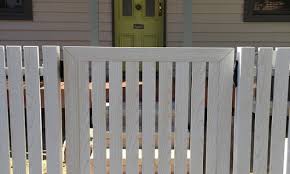Efficient Aluminium Fabrication not only ensures high-quality output but also minimizes material waste, saving both cost and environmental impact. Reducing waste in Aluminium Fabrication is a combination of smart planning, precision, and adopting sustainable practices. Contractors and fabricators who focus on waste reduction achieve better productivity and promote eco-friendly manufacturing standards.
Plan and Measure Accurately
The first and most effective way to minimize waste in Aluminium Fabrication is through careful planning. Accurate measurement before cutting ensures that each piece of aluminium is used to its full potential. Using CAD software or digital measuring tools allows fabricators to map out exact dimensions, reducing offcuts and errors. Precision at the planning stage prevents rework and material loss later.
Optimize Material Layout
Optimizing sheet layouts before cutting can significantly reduce leftover scraps. By nesting parts closely together in the design stage, fabricators can maximize the use of each aluminium sheet. CNC machines with nesting software can automatically calculate the most efficient layout, ensuring minimal waste. This approach is especially useful for high-volume production where every millimeter of aluminium counts.
Reuse and Recycle Scrap Material
Scrap aluminium is not waste—it’s a valuable resource. Aluminium is 100% recyclable without losing its quality, which makes recycling an essential part of sustainable Aluminium Fabrication. Collecting and sorting offcuts, shavings, and trimmings allows fabricators to sell them back to recyclers or reuse them for smaller components. This reduces raw material costs and supports environmental conservation.
Use the Right Cutting Tools
Using the correct cutting tools for Aluminium Fabrication ensures clean cuts with minimal kerf loss. Dull or inappropriate blades can lead to uneven cuts, wasted material, and costly rework. Regular maintenance of saws, lasers, and CNC cutters maintains accuracy and prevents unnecessary material damage. Precision tools contribute directly to efficient material utilization.
Train Fabricators for Efficiency
Skilled workers are crucial to waste reduction. Proper training helps fabricators handle materials correctly, operate machines efficiently, and make fewer mistakes. Training programs focused on precision cutting, welding control, and assembly methods can significantly reduce the amount of aluminium wasted due to human error. Experienced fabricators also know how to repurpose leftover pieces effectively.
Implement Lean Manufacturing Principles
Lean manufacturing is a proven approach to reducing waste and increasing efficiency. Applying lean principles in Aluminium Fabrication means streamlining workflows, eliminating redundant steps, and improving process coordination. Regularly reviewing fabrication processes helps identify areas of waste, such as excessive movement, idle time, or overproduction, and allows for continuous improvement.
Choose the Right Aluminium Alloy
Selecting the right alloy for each project prevents unnecessary waste. Different alloys have unique strengths, flexibility, and corrosion resistance. Using an unsuitable alloy can lead to material rejection or rework. Understanding the properties of commonly used alloys like 6061, 6063, and 5083 ensures that fabricators choose the best option for durability and performance.
Prevent Welding and Finishing Errors
Mistakes during welding or finishing often lead to scrapped parts. Controlling welding temperatures and cleaning surfaces properly before joining helps prevent defects. Similarly, applying coatings or finishes under controlled conditions avoids reapplication or damage. Consistent quality control during each step minimizes waste and improves overall output.
Maintain Equipment Regularly
Well-maintained equipment performs more accurately and reduces material waste. Regular calibration of cutting machines, welding tools, and bending equipment ensures precise results every time. Preventive maintenance reduces downtime and avoids costly errors that could damage aluminium sheets or components during fabrication.
Adopt Digital Fabrication Technology
Digital fabrication tools like CNC routers, laser cutters, and automated bending machines improve efficiency and accuracy. These technologies minimize human error and optimize material usage. Advanced software integration allows real-time monitoring of production, helping fabricators identify waste sources and improve yield rates. Automation is an investment that pays off in long-term waste reduction.
Collaborate with Suppliers
Working closely with material suppliers can also reduce waste. Ordering aluminium sheets or extrusions in custom sizes that match specific project requirements prevents excess leftovers. Some suppliers offer recycling programs or buy-back options for scrap materials, creating a sustainable loop that benefits both fabricators and manufacturers.
Conclusion
Reducing waste in Aluminium Fabrication is not just about saving materials—it’s about improving efficiency, profitability, and sustainability. Through accurate planning, optimized layouts, proper training, and the use of advanced tools, fabricators can achieve near-zero waste operations. By making waste reduction a core part of every project, professionals contribute to a cleaner environment while strengthening their competitive edge in the Aluminium Fabrication industry.


